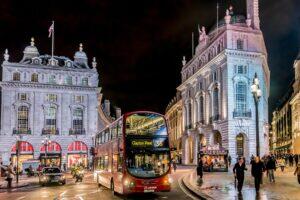Fodor's Expert Review The Queen's Gallery
Technically speaking, the sovereign doesn't "own" the rare and exquisite works of art in the Royal Collection: he merely holds them in trust for the nation—and what a collection it is. Only a selection is on view at any one time, presented in themed exhibitions. Let the excellent (and free) audio guide take you through the elegant galleries filled with some of the world's greatest artworks.
A rough timeline of the major royal collectors starts with Charles I (who also commissioned Rubens to paint the Banqueting House ceiling). An avid art enthusiast, Charles established the basis of the Royal Collection, purchasing works by Raphael, Titian, Caravaggio, and Dürer. During the Civil War and in the aftermath of Charles's execution, many masterpieces were sold abroad and subsequently repatriated by Charles II. George III, who bought Buckingham House and converted it into a palace, scooped up a notable collection of Venetian (including Canaletto), Renaissance (Bellini and Raphael),... READ MORE
Technically speaking, the sovereign doesn't "own" the rare and exquisite works of art in the Royal Collection: he merely holds them in trust for the nation—and what a collection it is. Only a selection is on view at any one time, presented in themed exhibitions. Let the excellent (and free) audio guide take you through the elegant galleries filled with some of the world's greatest artworks.
A rough timeline of the major royal collectors starts with Charles I (who also commissioned Rubens to paint the Banqueting House ceiling). An avid art enthusiast, Charles established the basis of the Royal Collection, purchasing works by Raphael, Titian, Caravaggio, and Dürer. During the Civil War and in the aftermath of Charles's execution, many masterpieces were sold abroad and subsequently repatriated by Charles II. George III, who bought Buckingham House and converted it into a palace, scooped up a notable collection of Venetian (including Canaletto), Renaissance (Bellini and Raphael), and Dutch (Vermeer) art, and a large number of baroque drawings, in addition to patronizing English contemporary artists, such as Gainsborough and Beechey. The Prince Regent, later George IV, had a particularly good eye for Rembrandt, equestrian works by Stubbs, and lavish portraits by Lawrence. Queen Victoria had a penchant for Landseer animals and landscapes, and Frith's contemporary scenes. Later, Edward VII indulged Queen Alexandra's love of Fabergé, and many royal tours around the empire produced gifts of gorgeous caliber, such as the Cullinan diamond from South Africa and an emerald-studded belt from India. Tickets are valid for one year from the date of entry.
READ LESS








